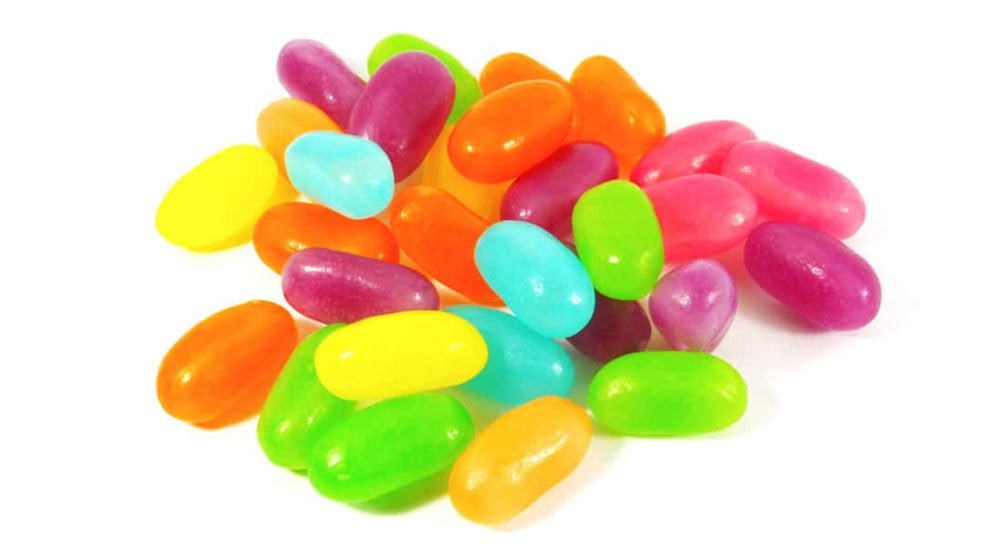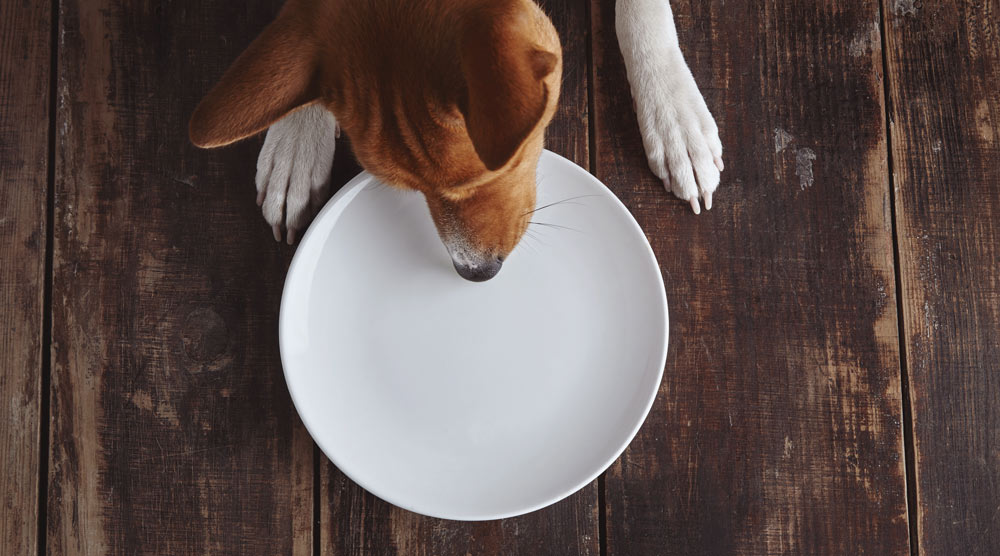Jelly beans aren’t a healthy dog treat and shouldn’t be given to your pet. But if your dog manages to snaffle some from an open packet, should this be cause for concern?
Contents
For dogs, these additives range from unhealthy (in the case of sugar) to potentially toxic. Sugar-free jelly beans can be even more dangerous. They often contain an artificial sweetener called xylitol, which is highly toxic for dogs.
In this article, I’ll discuss the risks of jelly beans to dogs, along with advice on what to do if they manage to eat some.
Note: This article about “can dogs eat jelly beans?” isn’t written by a veterinarian. If your dog has eaten anything that might be dangerous, contact a vet immediately.
Why Dogs Shouldn’t Eat Jelly Beans
The amount of sugar, additives and other ingredients in jelly beans varies depending on the brand, but it’s never a good idea to give them to your dog.
Here’s an overview of the most unhealthy and dangerous ingredients. Keep in mind that the dangerous dose of any ingredient depends on the dog’s size, age and other health issues.
Sugar
Sugar is the primary ingredient in most jelly beans. While sugar isn’t toxic for dogs, it’s just as unhealthy for canines as for humans.
Consuming too much sugar can lead to serious health conditions such as obesity, tooth decay and diabetes. Even eating a sugary snack as a one-off could cause your dog to suffer from an upset stomach.
Note: This is also why other sugary foods, such as caramel and candy such as Starburst, should never be given to your dog.
Xylitol
Xylitol is an artificial sweetener found in sugar-free candies, cakes and chewing gum. Not all sugar-free jelly beans contain xylitol, but many do – which is bad news for our canine companions.
This artificial sweetener is highly toxic to dogs, even in relatively low quantities. It’s rapidly absorbed into the bloodstream, causing large amounts of insulin to be released from the pancreas.
Dogs can then suffer from low blood sugar (a condition referred to as hypoglycemia). Symptoms can include vomiting, lethargy, confusion, seizures and liver failure. In severe cases, hypoglycemia can cause comas and even death.
In higher doses, xylitol can also lead to liver disease. This can take 1-2 days to fully develop.
As a general rule, doses greater than 75-100 mg/kg are required for hypoglycemia. “I’ve had many owners contact me in a real panic because their dog has snaffled a candy or two which contains xylitol,” says vet Dr Linda Simon. “For larger dogs, eating one or two jelly beans generally won’t cause signs and would not require vet treatment.”
However, if your dog has eaten jelly beans containing xylitol, you should still always seek veterinary advice immediately. Don’t take chances – let your vet calculate whether the dose is likely to cause a health issue. The faster your dog gets treatment, the better chance he has of avoiding severe health problems.
Caffeine
Although it’s not a primary ingredient, some jelly beans contain caffeine. It’s especially common in “sporting” jelly beans designed to give an energy boost. These beans also tend to have an even higher sugar content.
Caffeine is toxic for dogs and, even in small doses, can have an impact on behavior. The stimulant effect of this ingredient is amplified in dogs, leading to an increased heart rate and hyperactivity.
The effects of high doses of caffeine can be even more serious. Examples include raised blood pressure, upset stomachs, and, in extreme cases, seizures or collapse.
Tip: Want to learn more about keeping your dog safe around the home? Check out our guide to dog-proofing a house and garden.
Other Unhealthy Ingredients
It’s not just the big three above that can be a problem if a dog eats jelly beans. There are several other troublesome ingredients, such as:
- Artificial Additives. Many jelly bean manufacturers use a host of artificial colors, flavorings and other additives when making their products. While not all additives are bad, it can be difficult to identify which are included in each brand of jelly bean. Safety testing usually won’t have included dogs either.
- Pectin. Some jelly beans use this soluble fibre as a gelling agent. It’s not a bad ingredient in itself, and is sometimes even administered in small doses to help treat dogs with diarrhea. If too much is consumed, however, it can cause stomach upsets and constipation.
- Risky Fruit or Vegetable Concentrates. Some jelly beans contain fruit juice concentrates to create natural flavors. Grapes, which are toxic for dogs, are seen on some ingredient lists. Although dogs would likely have to consume a lot of grape-flavored jelly beans for this to cause a problem, it’s something to keep in mind.
What Should You Do If Your Dog Ate Jelly Beans?
Eating one or two jelly beans is unlikely to be dangerous to your dog’s health – as long as the beans don’t contain xylitol.
Always check the label to ensure xylitol isn’t listed though. You should contact a vet immediately if you suspect your dog has eaten even a small quantity of jelly beans with xylitol.
“It’s always best to give us a call, and we can calculate whether or not your pooch is at risk. If we have any concern, the sooner vomiting is induced, the safer it will be,” says vet Dr Linda Simon. “Low blood sugar can develop as soon as 30 minutes after eating large quantities of jelly beans containing xylitol. If your dog develops signs before reaching the clinic, offer them a meal or rub honey on their gums to keep sugar levels from dipping too low.”
Jelly beans without xylitol can still cause health problems in some cases. The more your dog has eaten, the greater the risk of a stomach upset or change in behaviour. Other signs of toxicity in dogs include lethargy, tremors, drooling, vomiting, diarrhea, loss of coordination and seizures.
If you notice any changes to your dog’s behaviour or health, or they ate more than a few jelly beans, you should contact your vet for advice. For serious cases of toxicity, early treatment is vital to give your dog the best chance of recovery.
Tip: Take the jelly bean packet to the vet so they can see the ingredient list. This makes diagnosing the problem much easier and faster.
Conclusion
Feeding jelly beans to your dog isn’t a good idea. These candies are full of unhealthy sugars and potentially risky artificial additives.
Sugar-free varieties that contain the artificial sweetener xylitol should be avoided at all costs. This ingredient is highly toxic to dogs, even in small quantities. If your dog manages to steal jelly beans containing xylitol, it’s important to seek veterinary advice immediately.




